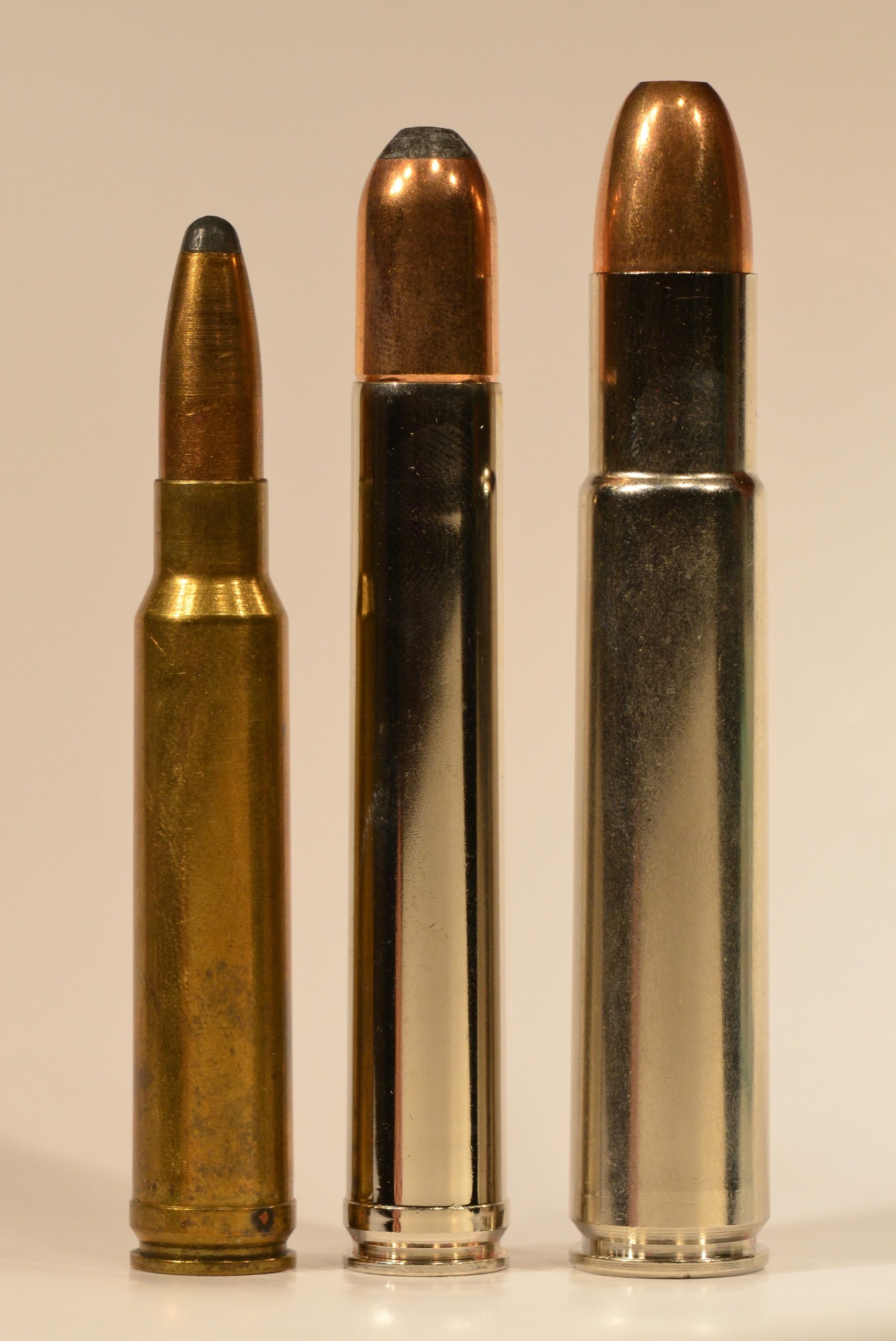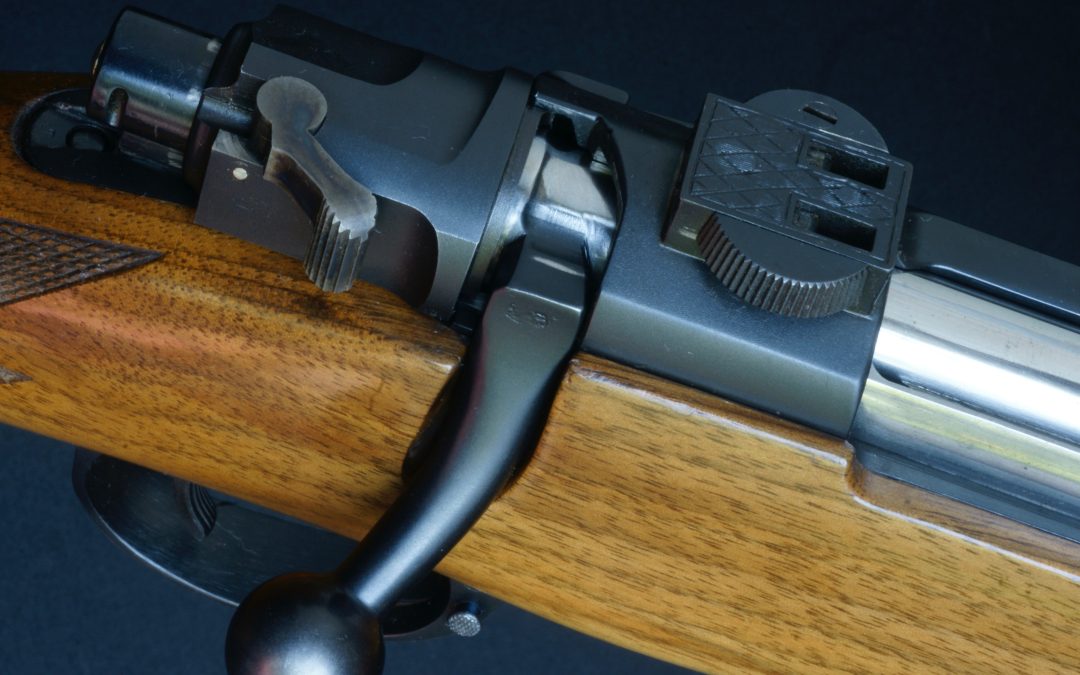Custom rifle built on an FN Supreme action. Chambered for the .450 Ackley (ballistically identical to the .458 Lott), rifles in this caliber range lend themselves well to scopes with detachable mounts. Combined with the wide range of loading options, there is no more versatile rifle in the world.
This article first appeared in Shooting Times in 2019
By Terry Wieland
Riflemen are prone to fads and fashions like everyone else. In the early 1990s, as interest in British double rifles was reawakening, any double chambered for the .470 Nitro Express was blessed with what was called the “.470 premium.” This was about a 20 per cent higher price, gun for gun, because ammunition was readily available.
As ammunition for other calibers crept back on the market, interest in the .470 waned somewhat, not least because those with money to afford several doubles became bored with it. The .500 NE was next up. When both rifles and ammunition for the .500 became common, interest switched to the .577 NE. In 2010, I saw a nice Holland & Holland .577 for sale at Puglisi’s with an asking price of $280,000. He got it, too.
The same is true of bolt-action calibers, but these are rifles that anyone with a serious interest in dangerous game can afford. For many years, “.458 Winchester” was the answer to just about any question, because it was all that was available. The .458 WinMag has its problems, however — problems that Jack Lott sought to resolve with the slightly longer .458 Lott. As the Lott gained popularity, it became a standard, and guess what? Shooters looked around for something new, something different, something bigger.
Both the British .500 Jeffery and .505 Gibbs enjoyed renewed interest, and Norma catered to all of these with its African PH line, providing first-rate, modern hunting ammunition for rifles that, 30 years earlier, everyone was writing off as obsolete.
There has always been much more interest in dangerous-game rifles than there have been guys who actually hunt dangerous game. This is understandable. We can’t all go to Africa and hunt Cape buffalo, but most of us can afford to buy a rifle, work with it, and dream. I’m often asked what a shooter should buy for his first dangerous-game rifle, with many now evincing an interest in the .500 Jeffery or .505 Gibbs. My answer is always the same: For your first DGR, get a .458 Lott. Learn to load for it and shoot it, and only then look consider something bigger. In most cases, the Lott turns out to be more than enough.
Just as the .458 Lott is a quantum leap above the .338 Winchester in power, recoil, and rifle weight, so the .505 Gibbs is a quantum leap above the Lott. The problems do not end there, either. Brass is more expensive, bullets harder to come by, dies usually special order, and you may even need a bigger loading press to accommodate larger-diameter dies. These are not minor difficulties, even if money is no object.
Another advantage of the Lott is that if you arrive in Africa and your ammunition does not arrive with you, it’s possible to use .458 Winchester instead. Not ideal, but better than nothing. If the local ducca doesn’t have any, your PH probably will.
Power aside, my main reason for preferring the .458 Lott is that a handloader can concoct loads for it that are suitable for everything from white-tailed deer on up. There are good expanding .458-inch bullets from 300 grains to 600, countless designs in cast bullets, and various solids. These can be loaded to velocities as low as 1200-1500 fps with lead bullets, or approaching 3,000 fps with light jacketed ones.
This means you could use your .458 Lott for a wide variety of hunting aside from elephant and Cape buffalo, and a lot of use translates into intimate familiarity.
As well, an ideal weight for a Lott is between 8.5 and 10.0 pounds, depending on the scope, sling, and so on. My custom .450 Ackley (which is ballistically identical) weighs eight pounds, three ounces (unloaded, unslung, unscoped) and handles like a bird gun. Such handling qualities are exceedingly rare with the brawnier cartridges and rifles, but are a huge and distinct advantage when mbogo comes boiling out of a thicket.

Big bores real and imagined, from left: For comparison, the .375 H&H, then the .505 Gibbs, .577 NE, .585 GMA Express, .600 NE, an experimental lengthened .600 NE, pondered by A-Square in the early 1990s and mercifully abandoned, the .700 H&H, and finally an industrial-application 4-bore cartridge case. Only four of these (.375, .505, .577, .600) have any practical hunting application, and one of those (.600) is extremely limited.

